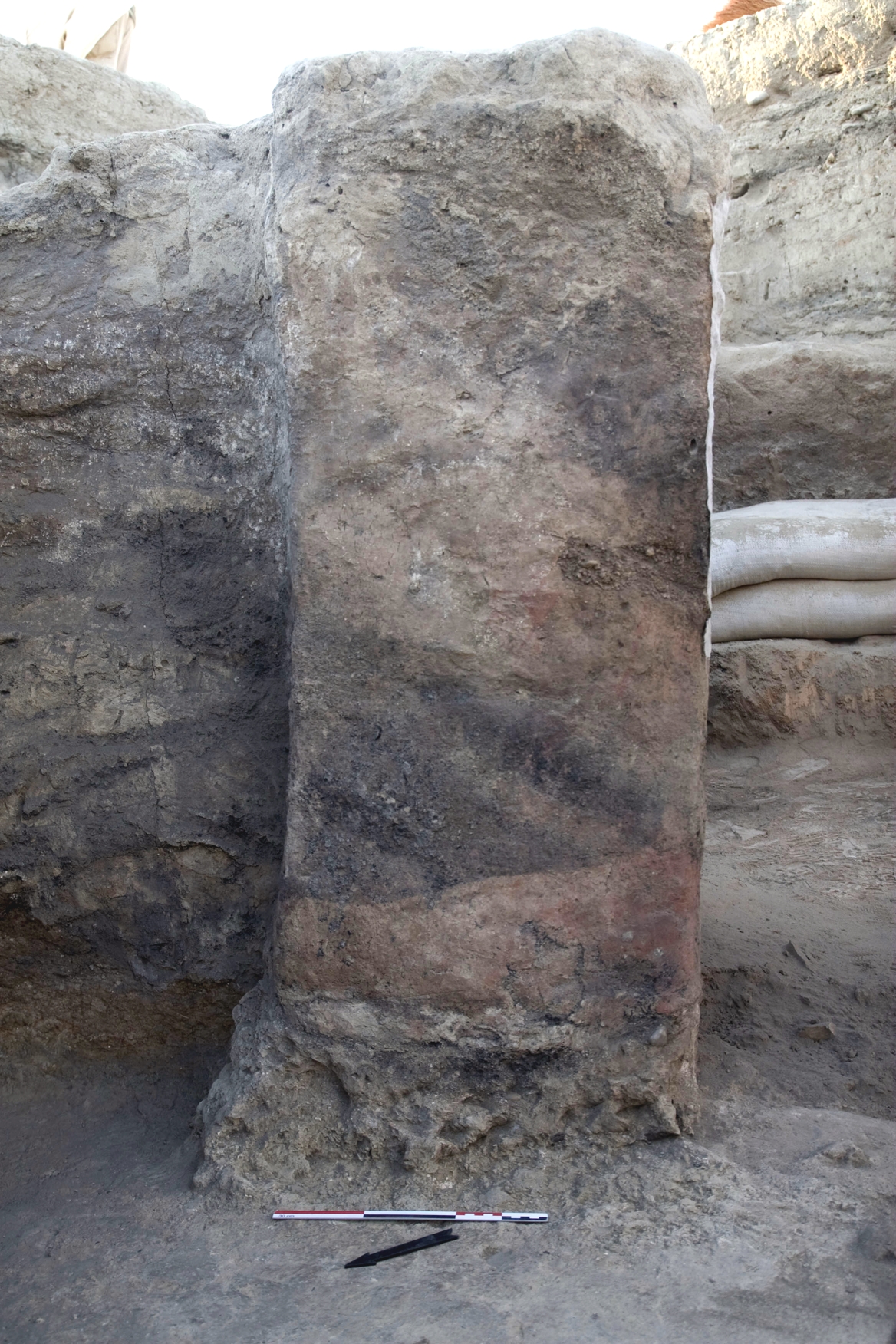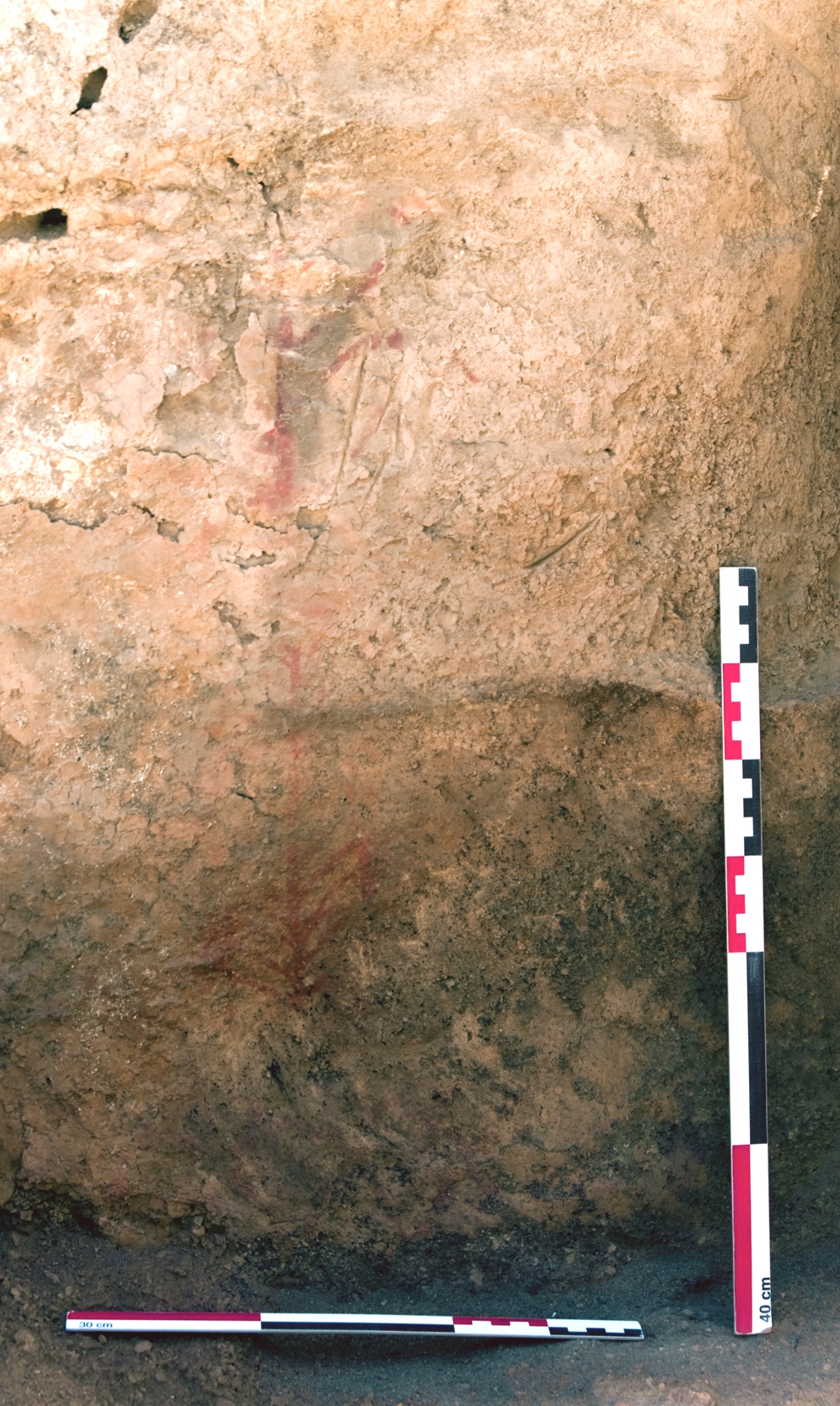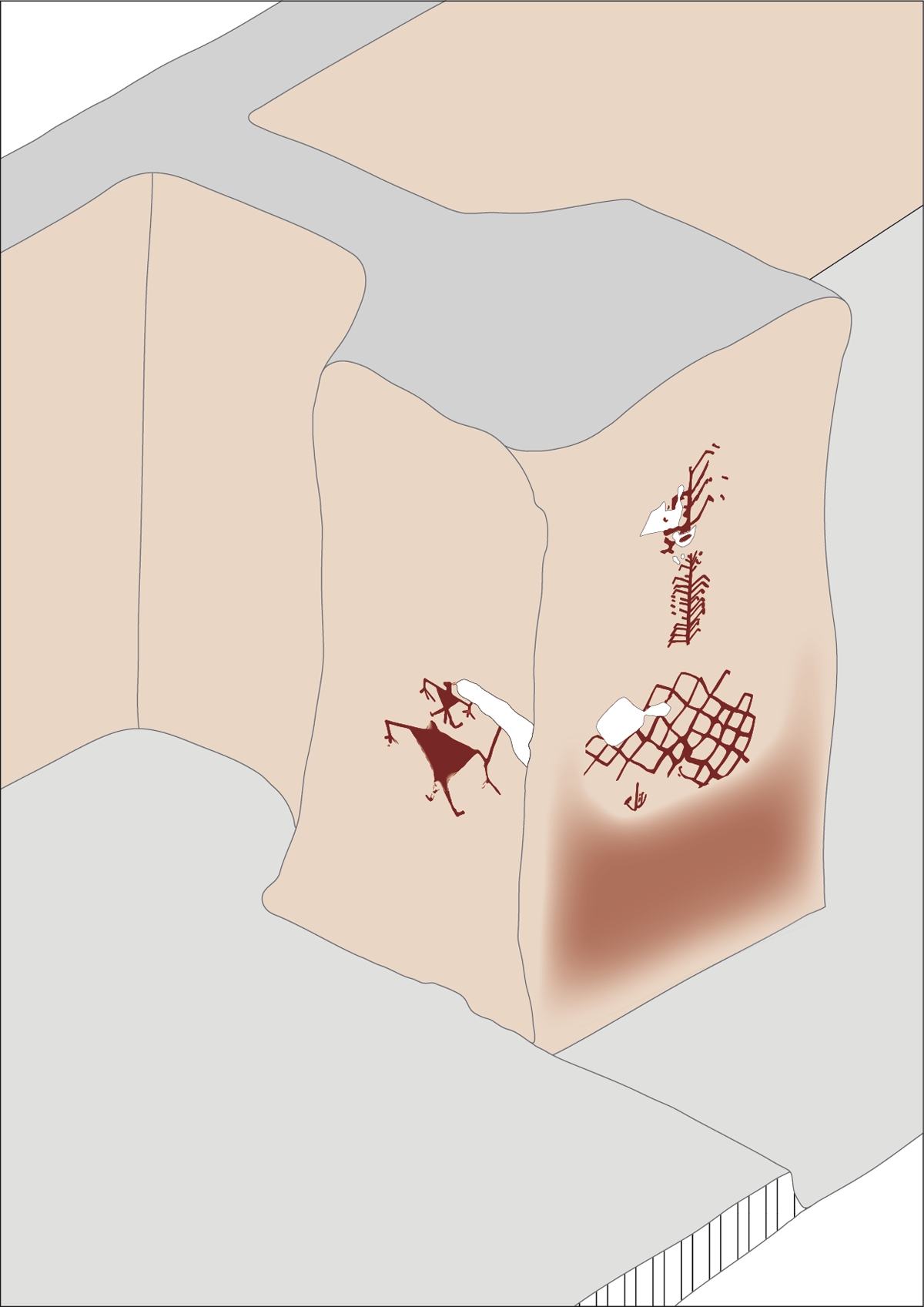Wall Painting
In the 2013 excavation season, painted figural and geometric images were discovered on two sides of the northern buttress in House 14. On the southwestern side facing into the room are two stylized bush-like representations with laterally extending branches; below them, a net pattern is depicted. On the northwestern side of the buttress are two anthropomorphic representations. The two stylized figures stand one above the other. The upper one is notably smaller. Both have a triangular upper body, laterally extended arms that are bent downwards at the elbow, and hands with three widely spread fingers that also point downwards. The legs are extended diagonally with the feet pointing upwards. The upper figure has a triangular head that is turned to the right and a pronounced male sex organ. The lower figure has, in contrast, no recognizable sexual characteristics, and the form of its head is unclear.
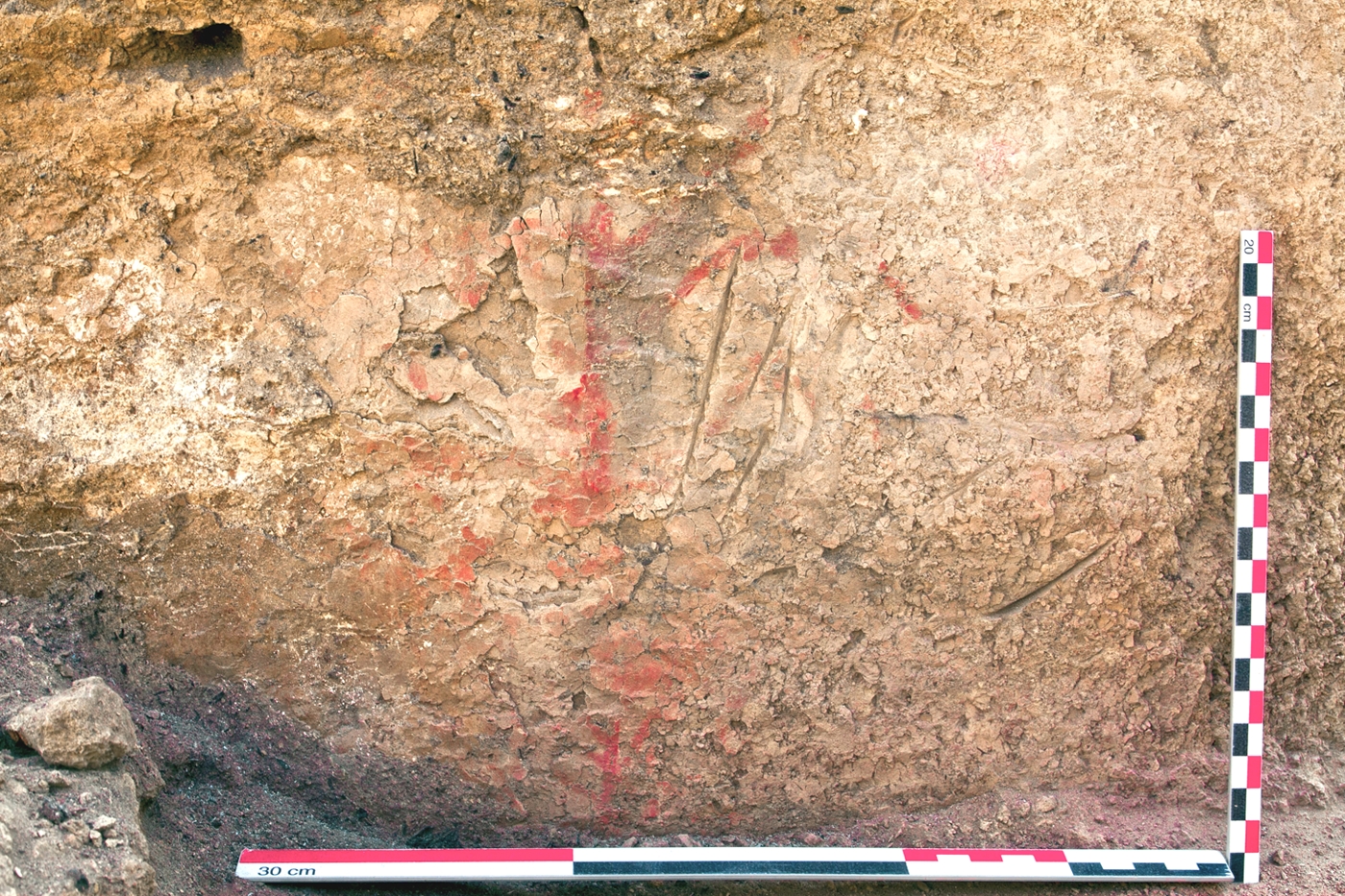
The T-shaped buttress was first covered with a thin, light brown coating of clay and then decorated with the reddish motifs. Since the other walls of the house were repeatedly covered with pigmented plaster, it is possible that the painted plaster layer on the buttress was only the most recent one in a series of multi-layered buttress decorations. The opposing buttress in the house seems not to have been painted. Whether the wall paintings were connected to a special function of the house or whether they are meant to express aesthetic notions cannot be definitively ascertained. The house was otherwise not clearly distinct from the others in the village. That it burned down may have contributed to the good preservation of the wall paintings.
Hints concerning the world of figurative representations of the residents of Monjukli Depe are also present in the form of clay zoomorphic figurines. Stylized plants are recognizable on painted pottery sherds, whereas clearly anthropomorphic representations are otherwise absent in the Aeneolithic Meana Horizon.
Wall paintings are up to now known from five other prehistoric sites on the northern side of the Kopet Dag. In Neolithic Pessejik, approximately 300 km to the northwest of Monjukli Depe, a polychrome wall painting with an animal scene was discovered in a structure interpreted as a cultic or assembly building. It includes naturalistic-looking quadrupeds, stylized trees, and occasional triangles and lozenges. Sites dating to the early Aeneolithic have yielded exclusively geometric motifs, including checkerboards and triangles as in Anau North or friezes of polychrome rhomboids in Jassy Depe.
In Middle Aeneolithic Ilgynly Depe the walls of buildings interpreted as sanctuaries were covered with negative paintings (resembling the so-called sgraffito technique), which display rows of waves and large dots but also stylized trees and snakes. None of these sites has yielded depictions similar to the anthropomorphic ones from Monjukli Depe.
For further reading, see Chapter 2 in Pollock et al. (eds.) 2019; Bernbeck and Pollock 2016.
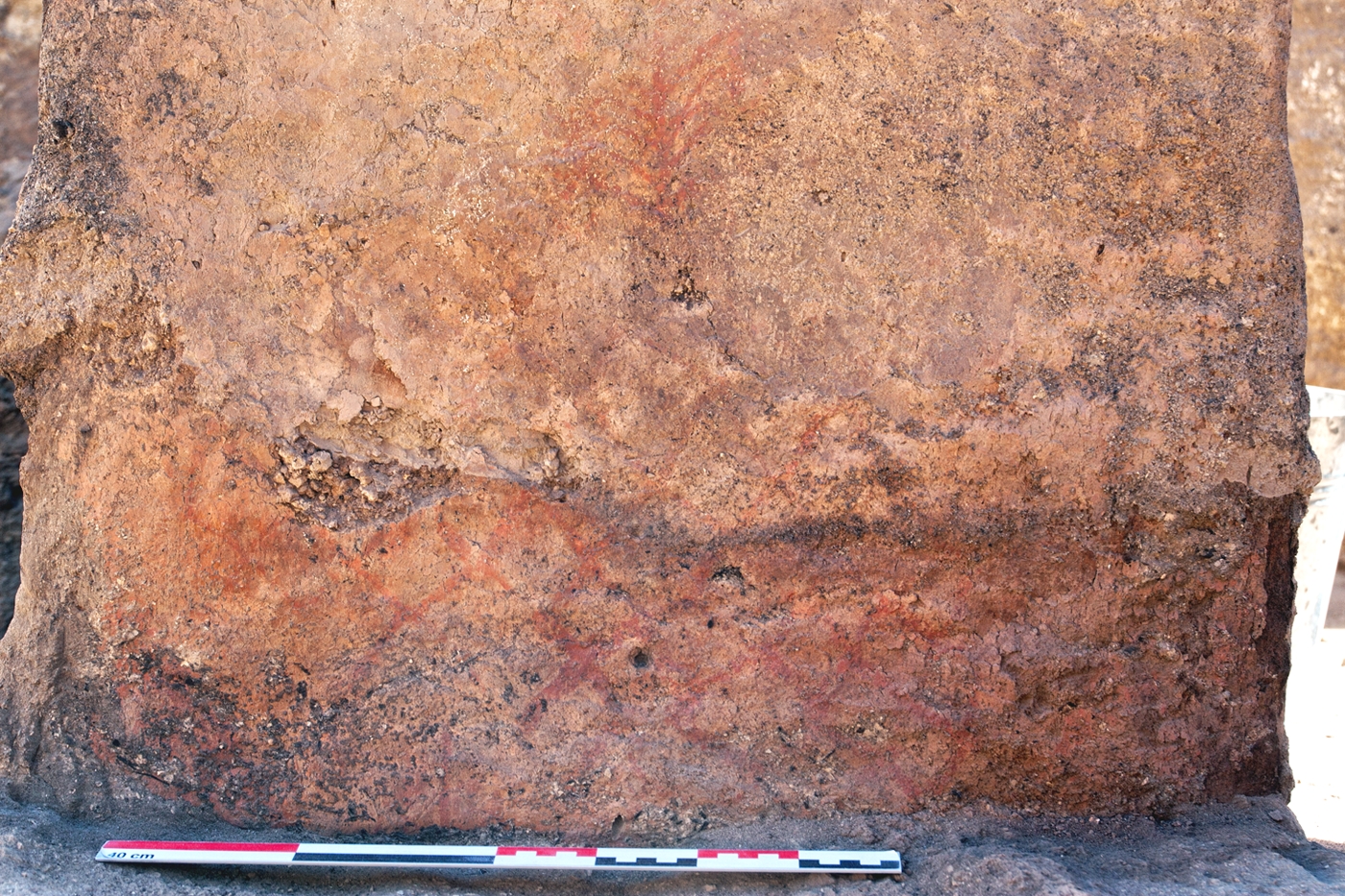 The lower portion of the wall painting on the face of the northeastern buttress in House 14. Below the plant-like depiction is a net pattern.
The lower portion of the wall painting on the face of the northeastern buttress in House 14. Below the plant-like depiction is a net pattern. 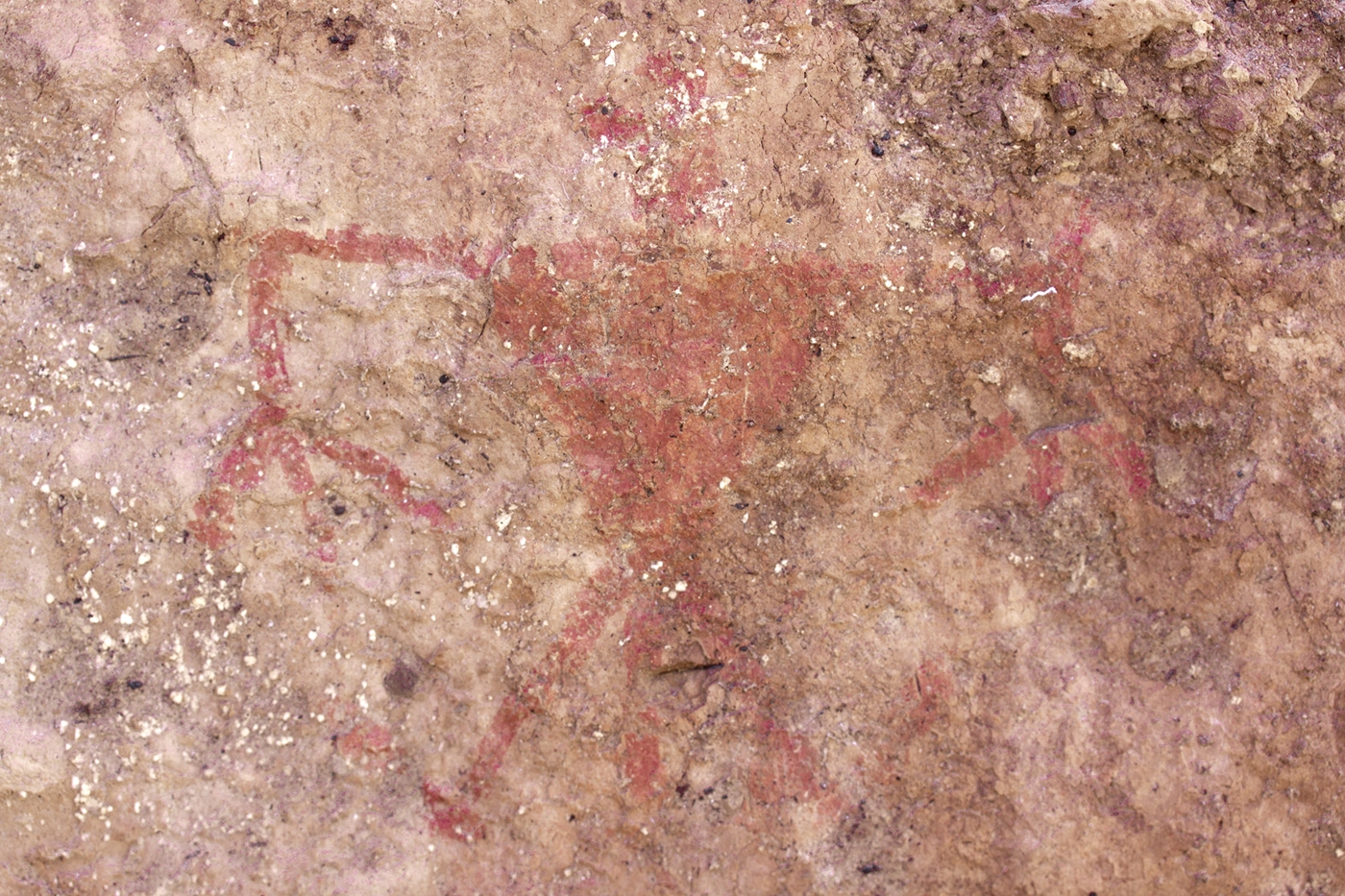 One of the two anthropomorphic figures on the backside of the painted buttress in House 14. The figure has broadly splayed hands, upturned feet, and a pronounced penis.
One of the two anthropomorphic figures on the backside of the painted buttress in House 14. The figure has broadly splayed hands, upturned feet, and a pronounced penis.
